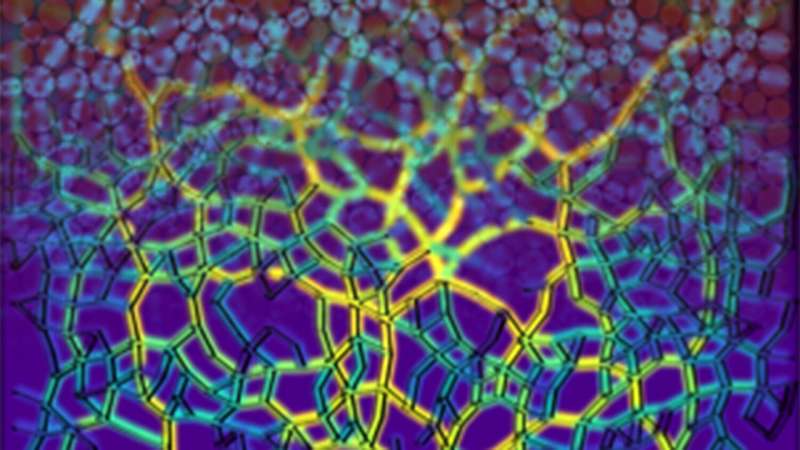Researchers forecast failure in disordered materials

Disordered materials—such as cellular foams, fiber and polymer networks—are popular in applications ranging from architecture to biomedical scaffolding. Predicting when and where these materials may fail could impact not only those materials currently in use, but also future designs. Researchers from North Carolina State University and the University of California Los Angeles were able to forecast likely points of failure in two-dimensional disordered laser-cut lattices without needing to study detailed states of the material.
The interior of disordered materials is formed by a network of connections between slender beams that intersect at various points—or nodes—throughout the material. Their structure allows for both compression and deformation, enabling them to withstand different types of force.
Estelle Berthier, postdoctoral researcher at NC State and lead author of a paper describing the research, set out to determine whether it is possible to predict where failure is most likely to occur in a disordered network. Berthier and co-author Karen Daniels, professor of physics at NC State, generated lattices based on the contact networks observed within granular materials and looked at a property known as geodesic edge betweenness centrality (GEBC).
"The importance of an edge in a network is in terms of its ability to connect different parts of network using the shortest path," Berthier says. "In our model lattice, when you connect each node of the network taking the shortest path, you use one of these beams, or edges. If you go through a particular edge a lot, then that edge has high centrality. Think about using the shortest path, or road, between two cities. The centrality value is the most popular road on that shortest path."
In collaboration with UCLA mathematician Mason Porter, the researchers used a computer algorithm to calculate the GEBC for the lattice and found that edges with a higher centrality value than the mean were the most likely to fail.
"If you have higher traffic on a particular road, then there's more wear and tear," Berthier says. "Similarly, a higher centrality value means that a particular path within the material is dealing with more force 'traffic,' and should be monitored more closely or perhaps shored up in some way."
The researchers found that the GEBC values alone were enough to identify failure sites in the material.
"One of the things that surprised me about the results was that the calculations don't require us to know any of the materials' properties, just how the parts have been connected together," Daniels says. "Of course, we can make the predictions even stronger by including information about the physical interactions in our calculations."
The research appears in Proceedings of the National Academy of Sciences and was supported by the James S. McDonnell Foundation.
More information: Estelle Berthier et al, Forecasting failure locations in 2-dimensional disordered lattices, Proceedings of the National Academy of Sciences (2019). DOI: 10.1073/pnas.1900272116
Journal information: Proceedings of the National Academy of Sciences
Provided by North Carolina State University


















